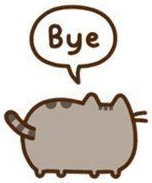Two-alternative forced choice
The two-alternative forced choice (2AFC) method is a ubiquitous choice for measuring detection or discrimination thresholds. During one trial of a 2AFC experiment, a subject is asked to make a decision about two stimuli with regard to a particular stimulus parameter of interest (it is also called primary parameter). For example, a subject is instructed to indicate which one of two terrain images shows an more realistic scenes. See following figures.
Figure 1. Two terrain images. Left terrain data is 1/64 down-sampled version of right terrain data.
Over repeated trials with stimulus pairs of varying difference in sample rates, a psychometric function can be calculated that reflects the empirical probability of the subject's choice as a function of stimulus difference. The slope of this sigmoidal function is a direct measure of the subject's discrimination threshold. There are many benefits in using the 2AFC method. It requires subjects to perform a simple decision task. It provides a threshold measure in physical units unlike scaling methods. Also, by restricting a subject’s response to a binary decision, it avoids any contamination of the measured perceptual thresholds with motor noise unlike methods of adjustment. Furthermore, it generally provides a large number of data points, thus allowing a statistically sound analysis and robust fits of the data. Finally, with signal detection theory (SDT), there exists a well-accepted and simple observer model framework that links the psychometric functions to an internal sensory representation of the stimulus parameter of interest. For all these reasons, the 2AFC method has been popular in many areas.
It is possible to introduce biases in decision making in the 2AFC task. For example, if one stimulus occurs more frequently than the other, then the frequency of exposure to the stimuli may influence the participant's beliefs about the probability of the occurrence of the alternatives.
'Cat.Storage > SubCat.Research' 카테고리의 다른 글
| DirectX Tessellation Strategy (0) | 2016.09.02 |
|---|---|
| Likert Scale (0) | 2016.08.16 |
| Depp Learning Surveys (0) | 2016.06.04 |
| Nearest Neighbor Search (0) | 2016.02.16 |
| ISO preference curves (1) | 2015.10.27 |






